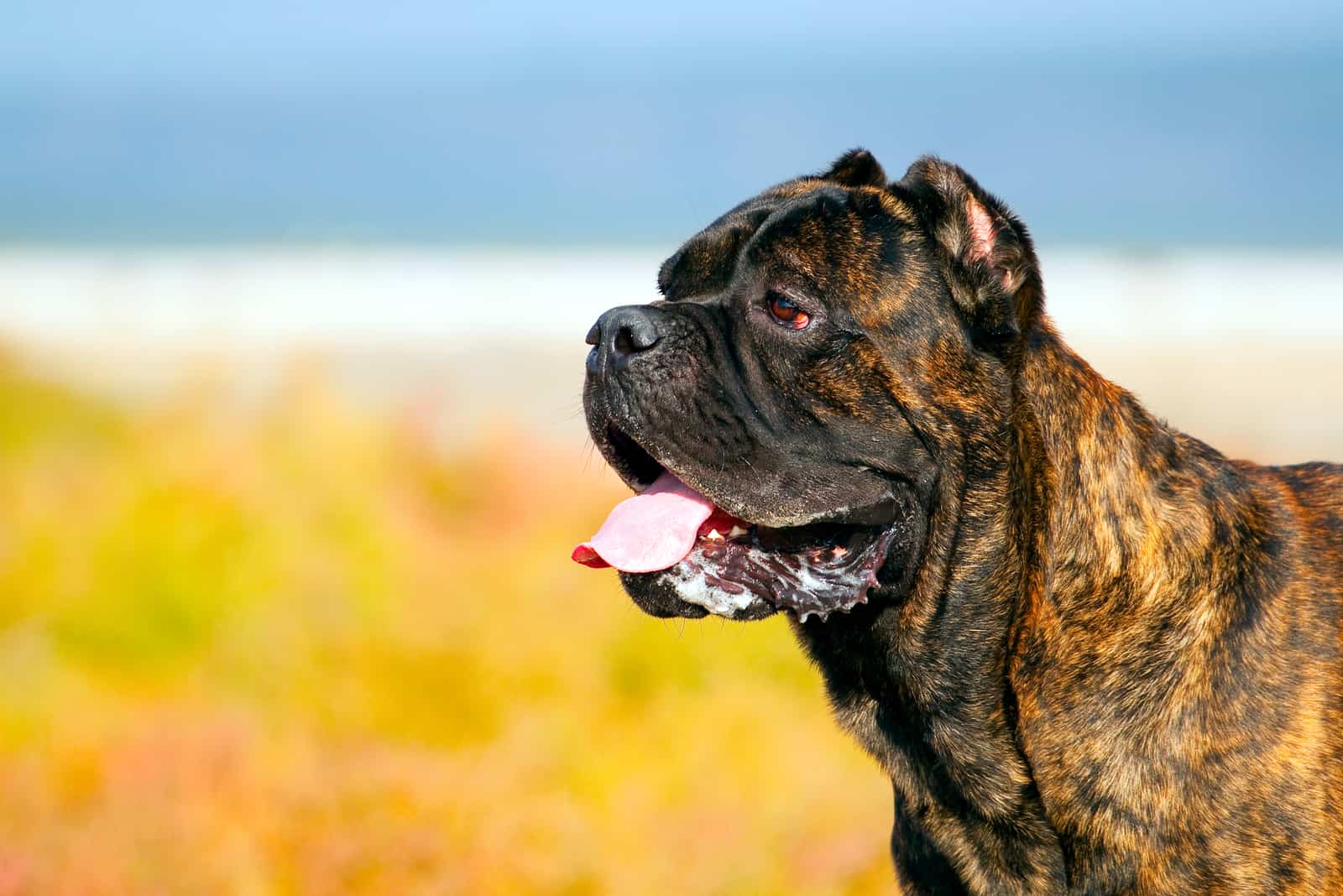By just looking at the Cane Corso, you can tell that it is a breed of remarkable resilience.
It’s hard to imagine that anything could hurt this gentle giant.
Even the strongest of dogs (and humans alike) are not invincible, and can fall ill just like all the rest. This is not to say that they are frail or sickly in general. Most Cane Corso health issues are preventable and/or treatable, and they are not hard to anticipate if screened for.
Dog owners know how truly heartbreaking it is to watch your pup suffer from any ailment.
As dogs are unable to comprehend medicine, the burden of keeping them in good health falls on us. Knowing what measures to take is key to a happy, healthy companion.
From hunting wild boar to being one of the most desirable protection dogs, the Cane Corso’s life was filled with turbulence. At least, what we can do today is provide a healthy life for these large dogs with giant hearts.
Cane Corso Health Issues Are Best Caught Early
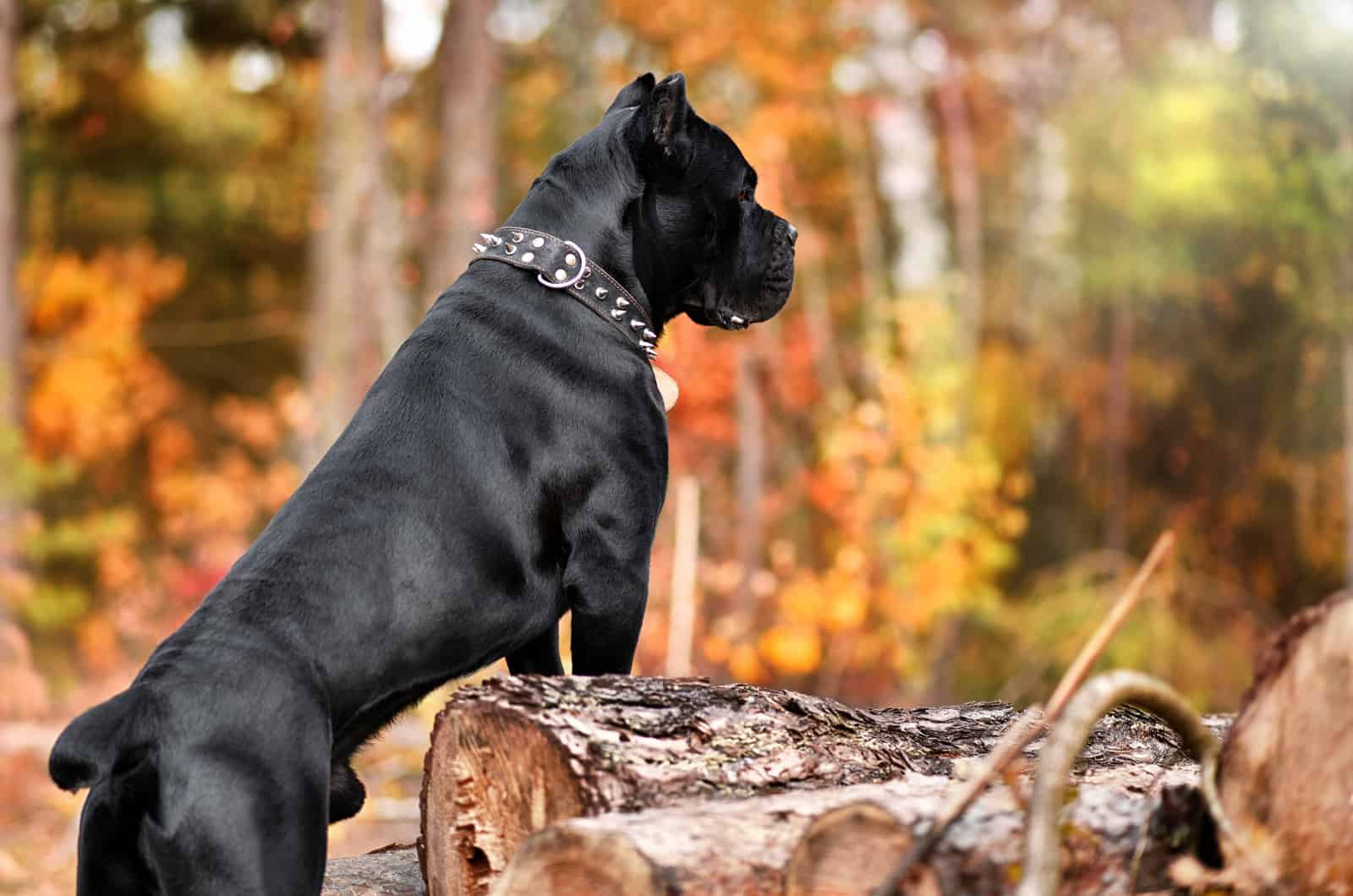
Every canine comes with a variety of potential health conditions that are typical of its breed, and the Cane Corso is no exception. As a first-time owner, you should be prepared to face even the most severe ones.
They are troubled by some of the most common dog health issues involving the joints, skin, and nervous system, and they are susceptible to some eye problems because of the peculiarities of their form.
It is said that prevention is the best cure, so it’s natural for you to want to be in the know.
If you’re looking for a list of health issues that are typical for the Cane Corso, we’ve got you covered with our list of Cane Corso chronic conditions and ailments.
If you aren’t well acquainted with the CC, don’t worry because we will take some time to get to know this proud breed first.
Healthwise, Are Cane Corsos Good Dogs?
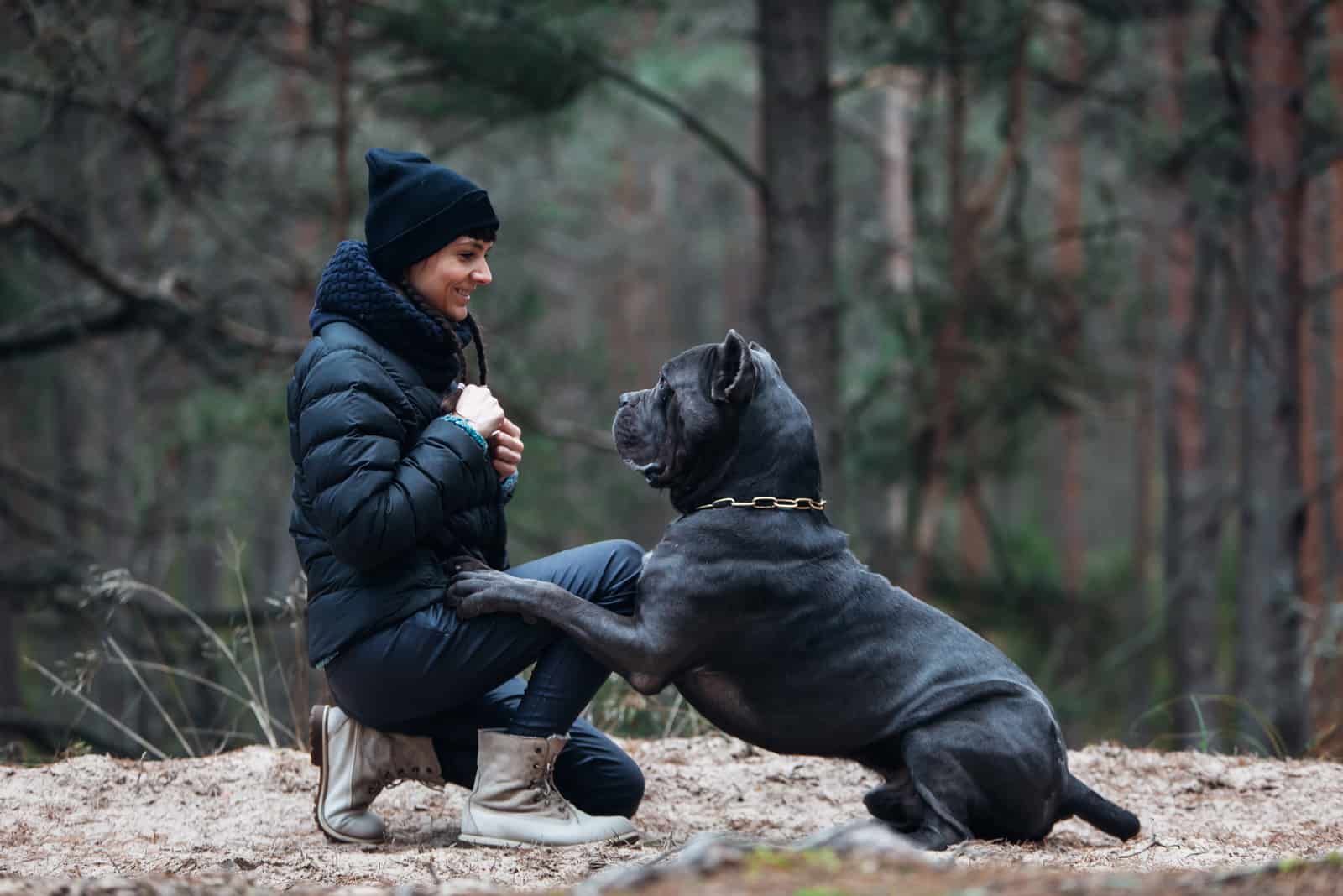
YES. The Cane Corso was basically bred back from the brink of extinction, and this recent and thorough breeding-back process was done skilfully and with modern knowledge of genetics.
Because of this, the Cane Corso is not prone to many inherited diseases. This is no frail dog… it is a mighty soldier fit for the Roman legions.
They’re mighty and confident, but they need a firm hand and lots of socialization to achieve their ultimate potential.
This ancient breed descends from molossoid dogs who are known to have been utilized as Ancient Roman war dogs and guard dogs.
They had been a common sight in the Italian peninsula for most of their history, but they didn’t get an American Kennel Club (AKC) recognized breed standard until 2010!
Cane Corso Kennel Clubs and the dog’s fans and breeders had time to develop the breed and, by then, the whole world had already heard of the mighty Imperial Mastiff that is the Corso.
Which Cane Corso Health Issues Are The Most Likely?
As previously stated, nothing out of the ordinary; just some hip problems typical to large breeds, some neurological issues that are being bred out, some eye abnormalities, and some pesky mites!
Buying a Cane Corso puppy from a reputable breeder is the sole way of ensuring that it is healthy, optimized, and breedable. Irresponsible breeding is harmful for dogs and owners alike, and it sets back the progress that breeders make to root out genetic diseases.
If your dog has an abnormality, it could make it unsuitable for parent-quality pedigree puppies as well as leaving it with a lower score in a show, as all diseases and medical interventions are listed in your dog’s chart.
Cane Corso Health Issues With Bones And Connective Tissues:
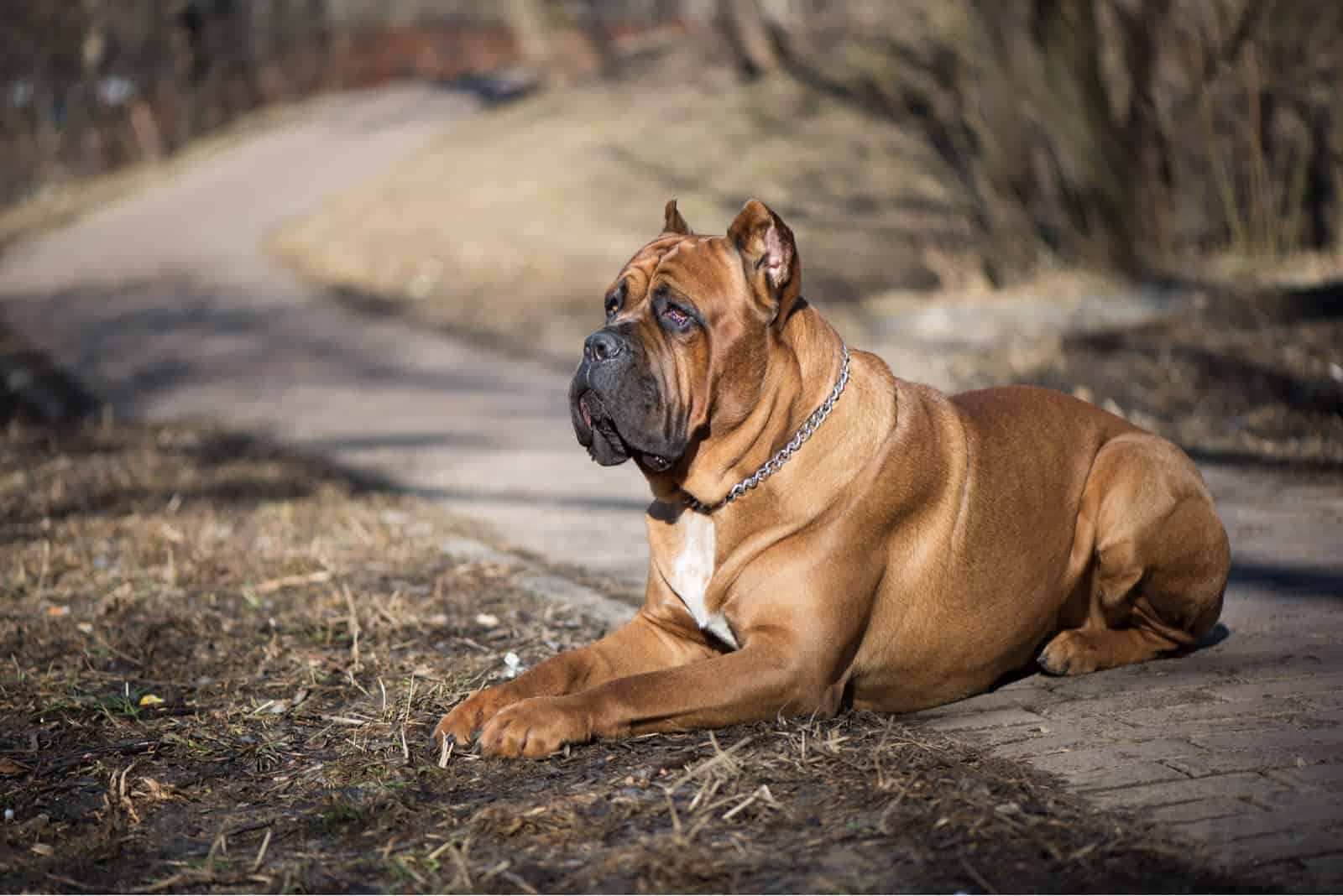
Corsi are a giant breed, towering above most dogs at the park.
This can often leave them prone to bone and joint wear and tear as their heavy body takes a toll on the supportive tissues in their skeleton.
Some of the most common Cane Corso bone issues are:
1. Hip Dysplasia.
Hip dysplasia is a condition affecting the dog’s hip joints… more precisely, it is when the ball end of the thigh bone is not fully inserted into the hip socket.
It is very common in large breeds, and it can be detected when the puppy becomes an adult dog. Affected dogs are often born with weak cartilage in the hip joint, and as the tissue wears over time, the ball end becomes detached from the socket.
It is more easily triggered in dogs that struggle with obesity and inactivity, but also too much activity as well as a dog’s joints not being able to catch up to its growth spurt.
It can happen to dogs of any age, but it is more common in older dogs.
Always ask for OFA and PennHIPP certificates from a breeder approved by the Cane Corso Association of America.
How Can I Tell If My Cane Corso Has Hip Dysplasia?
If you see that your dog is stiff, lethargic, or if it ‘bunny hops’ while leaning on its front legs, the culprit might be hip dysplasia.
This predicament is very painful, and may cause your dog a great deal of stress.
It causes your dog to limp and its leg muscles to atrophy from sparse use.
It is understood to be a hereditary abnormality, so you would be wise to ask the breeder about it when you first buy your Cane Corso puppy.
What Can Be Done About Hip Dysplasia?
The best option to treat this issue is surgery.
There are a couple of different options for this, including adjusting the pelvic bone, removing part of the femoral bone, or replacing the lot with a new hip altogether.
Your certified vet will determine the right approach according to your pup’s records.
This is also an instance where pet insurance might come in handy. A skilled surgeon will take care of this problem once and for all as this is a routine operation in veterinary medicine.
You should look into doing so at the earliest hint, for leaving it unchecked can lead to the development of secondary Osteoarthritis.
2. Osteoarthritis Is Not Deadly, but
…this disease affects your dog’s quality of life in a very bad way.
This type of arthritis is the most widespread in the canine world. It is estimated to afflict over a quarter of all dogs worldwide.
Basically, osteoarthritis is a joint issue where cartilage is lost and bones start growing in its place, thickening the joint capsule.
This renders the joint unusable, and over time, causes lameness of the affected limb.
It is caused by both genetics and by primary diseases such as hip and elbow dysplasia, various dislocations, etc.
Irregularities in lifestyle, such as obesity, can contribute to this issue arising.
How Will I Know If My Cane Corso Has Osteoarthritis?
Canine osteoarthritis is diagnosed by using X-rays, an MRI, and so forth.
One of its common telltale signs is, apart from the dog limping, a hard and immobile mass blocking the affected joint.
The vet will probably suspect this to be the verdict even before any test because it’s a very common disease, and it’s very noticeable and can be felt by hand, but tests should always be done in order to get a conclusive diagnosis.
When the disease first starts, you can tell by your dog’s change of gait as well as mumbling and groaning in pain as it moves, or if it is being distant, uninterested, and such.
What can be done about it?
The first thing you should do is cheer up!
If your dog has osteoarthritis, it’s not the end of the world. You can both still live a beautiful and fulfilled life.
There is no known cure for osteoarthritis. While this might sound grim, keep in mind that millions of people battle this illness on a daily basis throughout the world.
Up to 20% of the world’s dogs are affected by it, and it has a much greater frequency in dogs that suffer from joint dysplasia.
Being mindful of your dog’s feelings also goes a long way. Running and physical strength are a big deal to any dog. Being slowed down inexplicably (for them) could result in shock or confusion. Therefore, it’s important to make your pup feel safe and loved at all times.
If you feel that your dog might be in pain, you should check with your vet about administering painkillers to your dog. It’s important that you mind the dosage that the vet recommends because painkillers can be very toxic to dogs, especially ones meant for humans.
Gastrointestinal Cane Corso Health Issues:
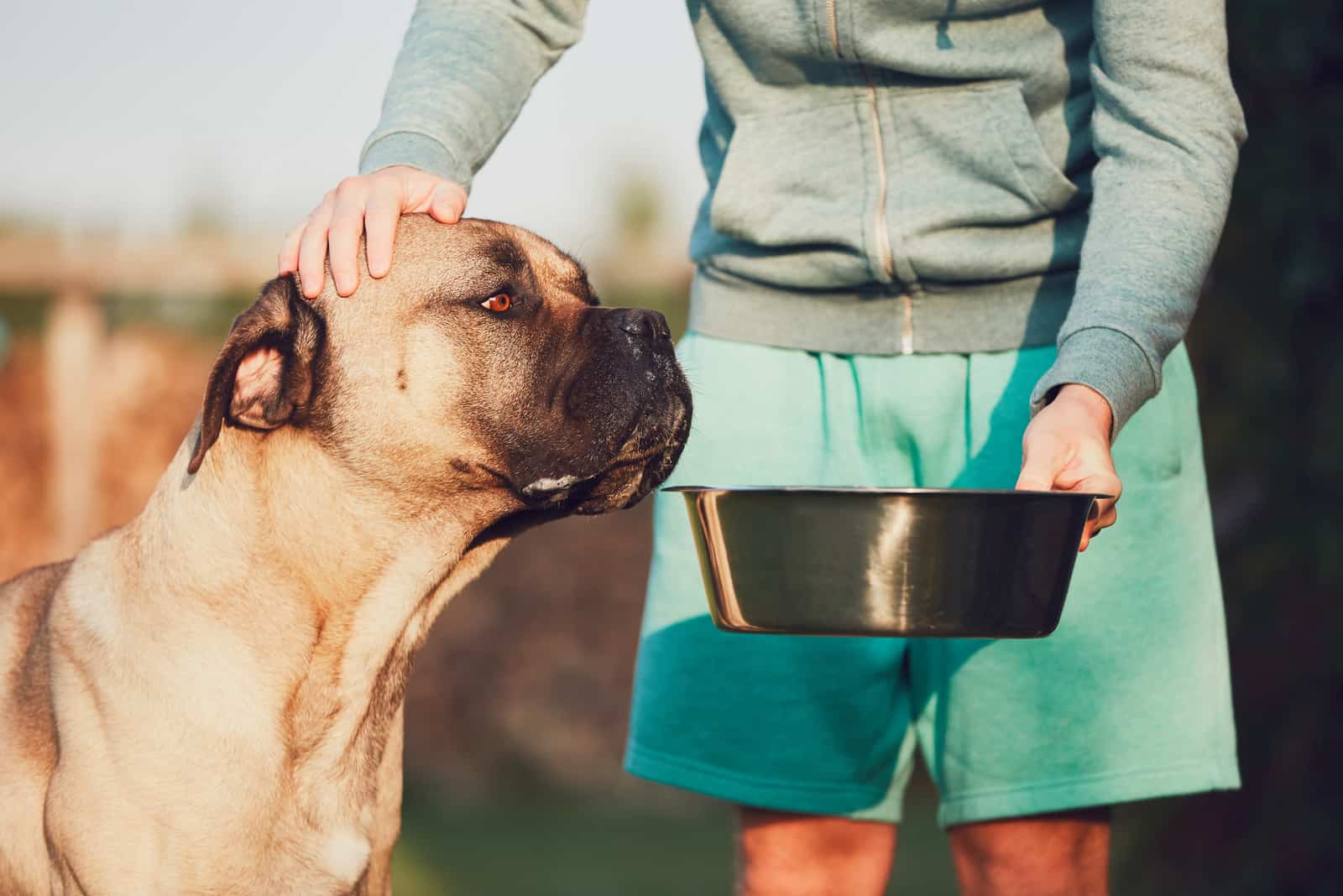
Abdominal issues are a big concern for me personally because I know how easy it is to miss the warning signs and how quickly they can spiral out of control.
It’s impossible to predict every time your dog will do something stupid like eat something it shouldn’t or hurt itself accidentally no matter how smart your pup might be.
The following disease is particularly random, and any dog could be affected by it.
It’s important to know what you’re dealing with if your dog is unfortunate enough to develop this health problem.
1. Bloat – Gastric Torsion Preys On Slim Dogs.
Also known as gastric dilatation volvulus or simply ‘bloat’, this affliction is every owner’s nightmare. It is a very serious and life-threatening condition, which should be acted upon immediately.
It is brought about by the dog’s organs moving about in its stomach cavity causing great discomfort.
Bloat is common in deep-chested dogs with tight stomachs, so your Cane might be at risk.
Experts are not sure what exactly causes this grave disease.
Anxiety, which causes your dog to swallow air, along with gassy, irregular foods, can be a trigger for this to happen.
This is part of the reason why it is always stressed that you should feed your dog only dog food that is carefully designed to fulfill all nutrition-related needs and not cause adverse effects such as bloat.
2. Gastric Torsion: Detecting And Defeating It.
The telltale signs are vague, and include anxiety, lethargic behavior, refusal to eat, and hard breathing.
Feel your dog’s stomach for any tension or firmness. Does it seem like it’s full of air?
Is your dog twitching or wincing when touched?
You should take your dog to your certified vet at the first signs of gastric torsion.
If left untreated, it can cause necrosis of the stomach and lead to sepsis and infection, quickly spiraling out of control.
If it is determined that your dog requires surgery, don’t worry, for it is safe, quick, and effective.
Depending on the severity, the vet is either going to insert a tube into your anesthetized dog’s mouth all the way to its stomach, which will drain the air out – or else he will make a small incision in the stomach to rid it of excess gas.
The outlook is good on this one if managed right away, but expect your dog to stay in the hospital for at least 48 hours.
Cherry Eye: It’s Painful And It Looks Ugly
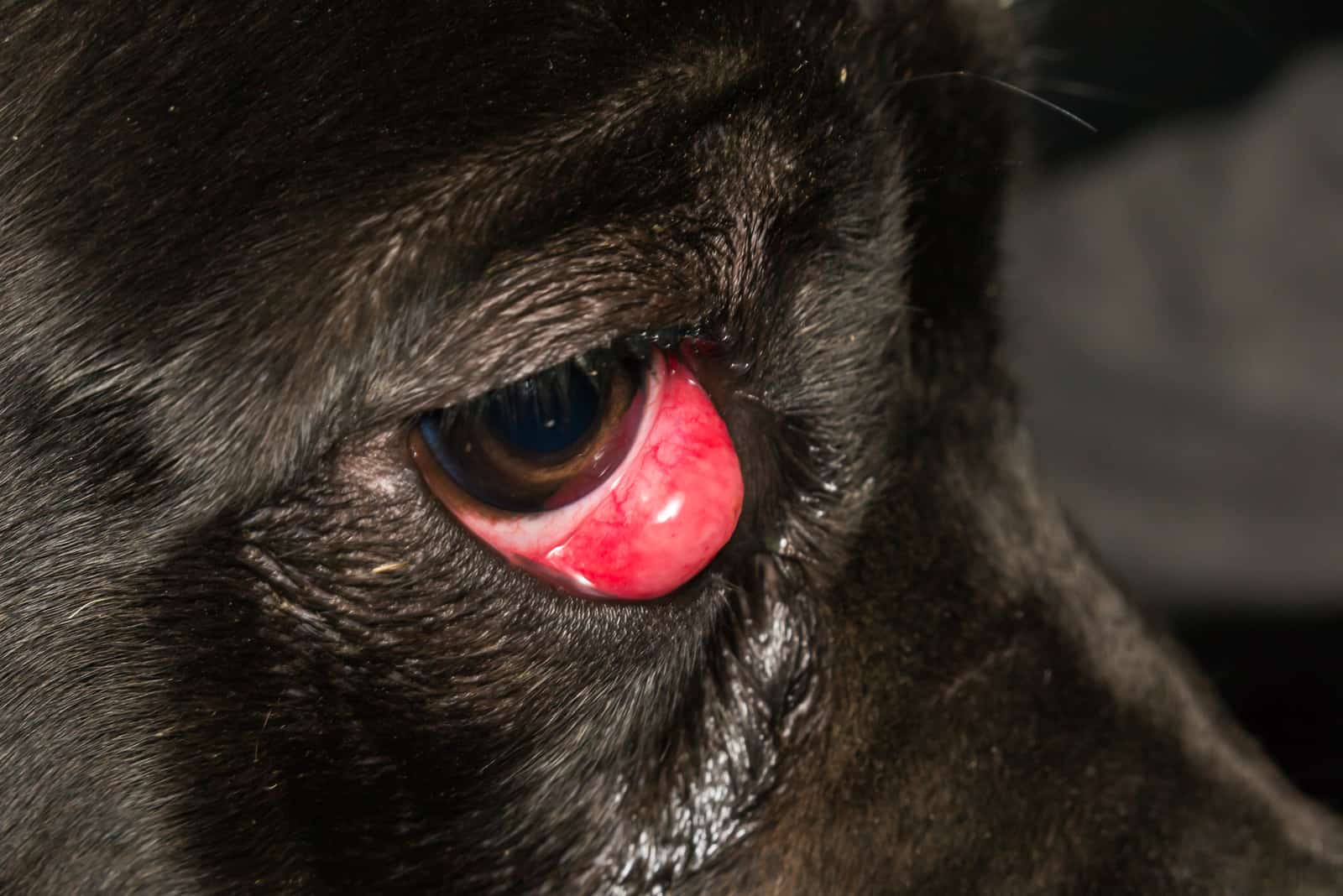
One of the most typical Cane Corso health issues, this ophthalmic issue causes red, protruding bulges in the corners of your dog’s eyes; hence, the name.
Its root cause lies in the inflammation of the nictitating membrane (the third eyelid, if you will), which is located on the inner edges of the eye where the eyelids meet.
This causes the tear duct to swell up, which causes the disease’s characteristic appearance.
While not immediately dangerous, it does cause a great deal of discomfort and is unsightly.
It might even scare you off to the nearest clinic without a second thought, but you needn’t worry because the chances are that your pooch will be just fine.
Why You’d Hate To See Cherry Eye In Your Cane Corso:
While not that serious and easy to cure, cherry eye can evolve into more pressing matters if left untreated, like conjunctivitis, vision impairment, injuries to the cornea due to eye scratching, and so on.
Cherry eye is estimated to be related to the dog’s head shape, which is why the Cane Corso is at a particular risk of developing it.
If proven that the ailment is genetic, caused by its great size, there might be no other way to get rid of it for good except via surgery. This should be done to help maintain your dog’s quality of life.
It usually happens to younger dogs, and does not typically afflict dogs older than 2 years.
Ectropion-Prone: Is Surgery Necessary?
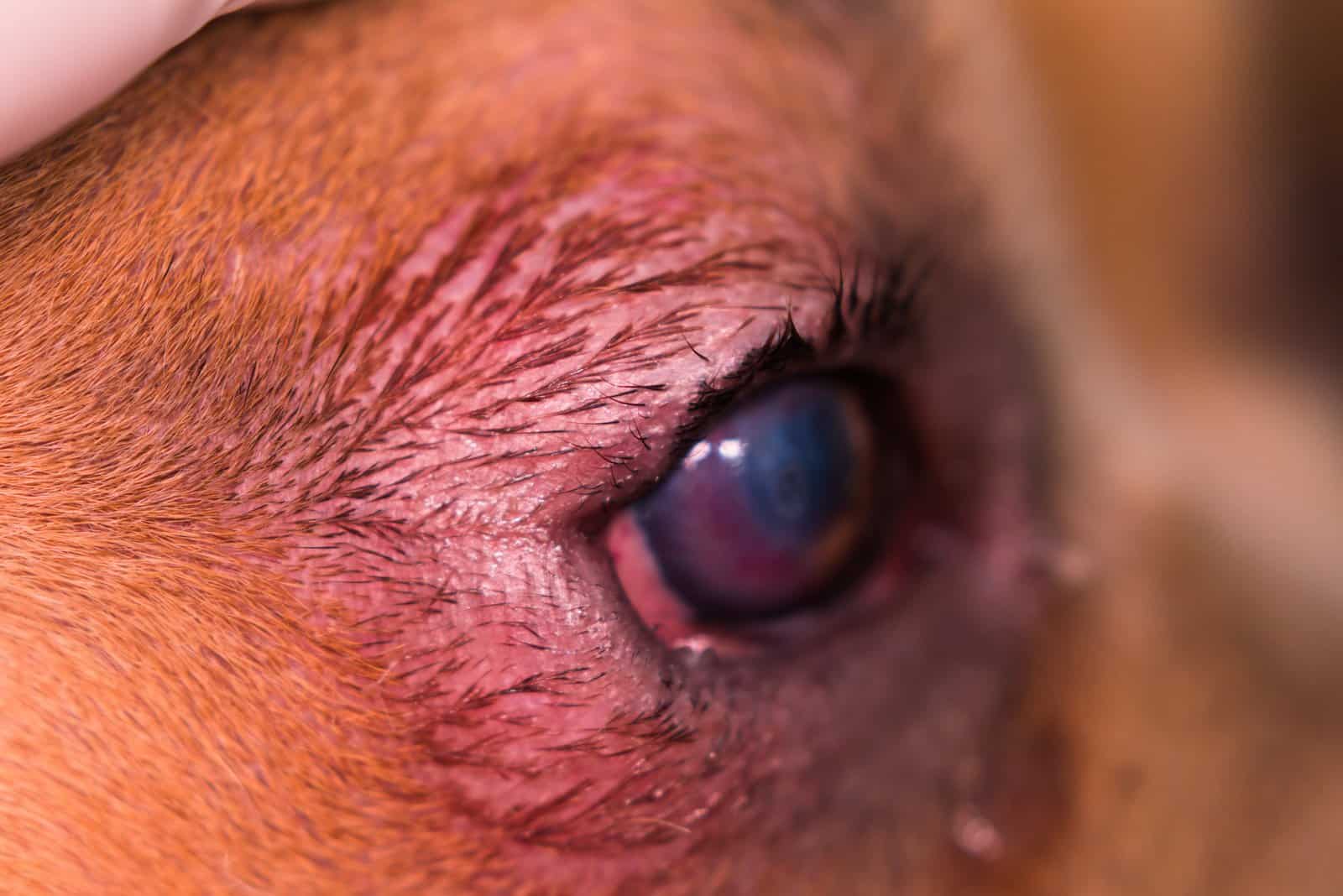
Ectropion is a condition where a dog’s eyelid is turned inside out, revealing the sensitive inner eyelid, and causing a number of problems.
This is a very common Cane Corso health issue due to their drooping face structure, as well as the St. Bernard, the Italian Mastiff, the Shar Pei, the Newfoundlanders, and a number of spaniel breeds.
You Will Know Ectropion When You See it
The disease has a few unmistakable symptoms such as:
• A drooping lower eyelid exposing an inner membrane called the conjunctiva, making it red and inflamed.
• Dark traces of tears that drip constantly without reaching the tear ducts.
• Inflammation.
• Irritation of the eye that keeps coming back from either bacterial infection or scratching.
It is known to be caused by a number of mutually unrelated, underlying factors.
It is referred to as ”primary” when it occurs chiefly because of the dog’s genetics; its face simply is not developing well. This is most common with the Cane Corso.
Primary ectropion can only be mended through corrective surgery!
Your pet insurance should be able to cover the expenses to get rid of this unsightly abnormality.
Secondary ectropion can be caused by a great deal of things, including infection due to trauma or bacteria, ulceration of the cornea, facial paralysis, extreme weight and muscle loss, and also hyperthyroidism.
It is treated by applying lubricants to soothe the eye and getting rid of the underlying cause, often with antibiotics.
Can A Cane Corso Also Get Entropion. What’s Different About It?
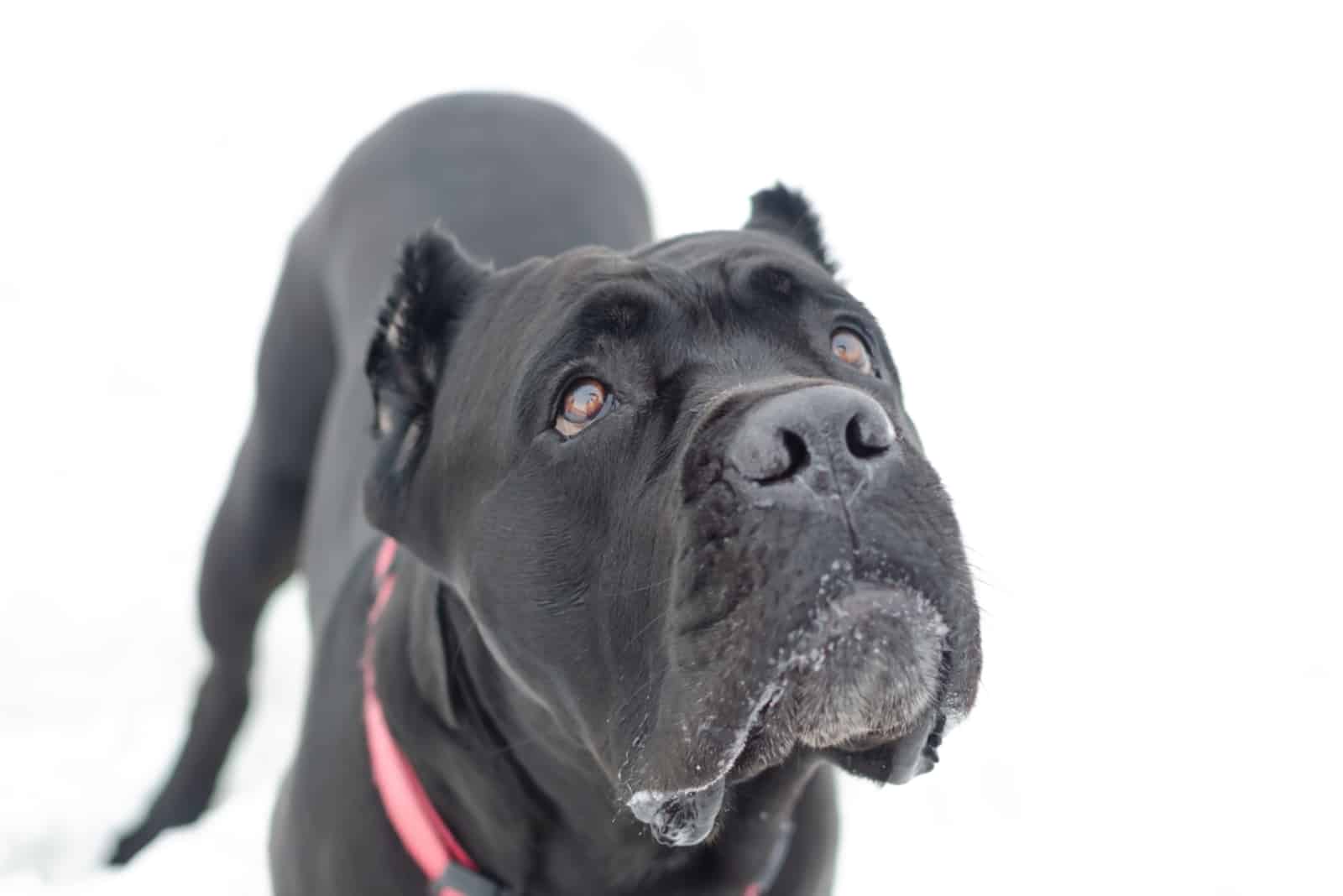
As the name suggests, this disease is the opposite of ectropion, with the eyelid rolling inwards and the eyelashes irritating the cornea.
It is typically “primary” for short-nosed as well as for droopy-skinned and giant breeds.
You can see where the Cane Corso comes into play here. It is also common for some retriever and setter dog breeds.
It usually happens due to the ligaments that hold the eyelids being too large in these dogs.
In its “secondary” form, it is caused by eyelid scarring, nerve damage, face muscle loss, or, most commonly, infection.
If the primary disease is treated, entropion will get better as well.
Entropion can lead to ulceration of the cornea, which is a rather painful sore in the eyes.
Finding Mucus In A Cane Corso’s Eyes
It is very easy to spot symptoms of an entropion onset in your Cane Corso.
You can tell by your dog’s rapid blinking, red and/or swollen eyes, and green-yellowish mucus building up in the corners.
Veterinarians can easily spot entropion in a dog’s eyes, and might do a test to check for corneal ulceration.
Young pups having trouble opening their eyes should be checked for entropion.
In giant breed dogs, such as the Cane Corso, it is most commonly dealt with by surgery.
Surgery of this kind is not performed on puppies, at least until their face sets in.
Until then, the issue is temporarily fixed by putting the bulging sac back into place and stitching up the skin so that it doesn’t prolapse again.
All of these Cane Corso health issues affecting the eyes are typically hereditary conditions, but are not exclusive to the breed. They are brought about by the breed’s head shape.
They affect a lot of other Mastiffs and droopy-faced dogs such as the Shar Pei, the Bulldog breeds, some Spaniels, and even Labradors and Labrador Retrievers.
Itching And Scratching: Demodex!
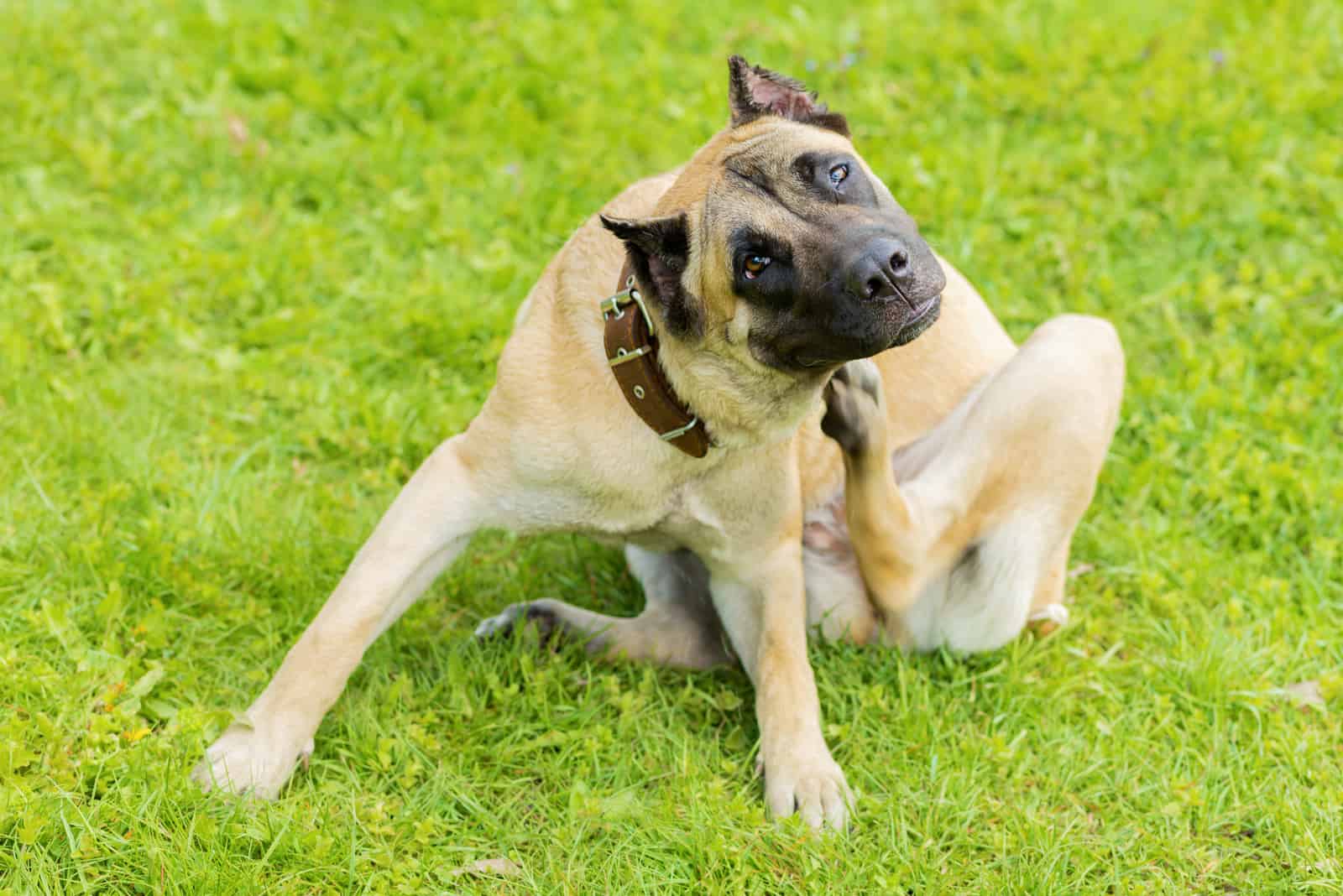
Mange is a very common skin condition in dogs.
It is caused by Demodex mites, which are naturally found on the dog’s skin and hair.
Although it is caused by the same pest, it can be either sarcoptic mange or demodectic mange depending on whether the mites attack the skin or the hair follicles.
One kind is indirectly passed on through faults in the immune system, and the other one can affect any dog unlucky enough to get infested.
It is a very stubborn disease, and it is difficult to root out entirely.
Demodectic Mange; A Lifetime Of Trouble
Also commonly known as red mange or just demodex, it is the more common of the two.
The hair follicle is what is targeted in this type, causing the Cane Corso’s fur to fall off in patches.
Your dog’s body is host to these mites that live in its fur in a symbiotic way.
They usually do more good than harm, and live and serve their purpose discreetly. It is dogs with a weakened immune system that are vulnerable to the mites spreading excessively.
The disease usually begins on the face.
The immune system problem may be genetic, and because of that, mange may appear to be inheritable.
It is unlikely that mange was present in your dog’s parents if you’re buying a Cane Corso puppy from a certified breeder as mangy dogs are rarely bred.
It causes itching, burning, and redness of the skin as well as hair loss that begins on the face, and it can be either localized or generalized.
Dipping Dogs: What Can I Do About Demodectic Mange?
Demodectic mange is dealt with by using several combined treatments… basically hitting the mites with everything you’ve got.
1. Topical creams and shampoos.
2. ‘Dipping’ – medicinal bathing in a special dip made of Amitraz, among other drugs.
3. Oral pesticides – while this is controversial, Ivermectin is often used off-label to treat mange, even though it’s not approved yet.
4. Steroid injections – to reduce the swelling and discomfort caused by mite bites.
While it isn’t life threatening, it can be debilitating in terms of life quality for your dog, and that’s why affected dogs are not further bred.
Sarcoptic Mange; It’s Totally Different… Kind Of.
In this variant, the parasitic demodex mites burrow into the skin of the host, causing itchiness and inflammation. Since the Cane Corso has a short coat, this condition can be easily spotted.
Also, this type of condition can increase the Cane Corso shedding.
Dogs tend to scratch and gnaw at the afflicted spots, which causes the hair to fall out in patches.
The next time you see a mangy dog on the street or in a dog park – run!
This disease is zoonotic, so it can be transmitted from your Cane Corso to you as well as other dogs.
Treatment of this health condition should be handled by a board certified vet, and it includes specially made dips and topicals.
A large number of oral medications in various forms are also available.
Ear Infections Can Trouble Clipped Dogs:
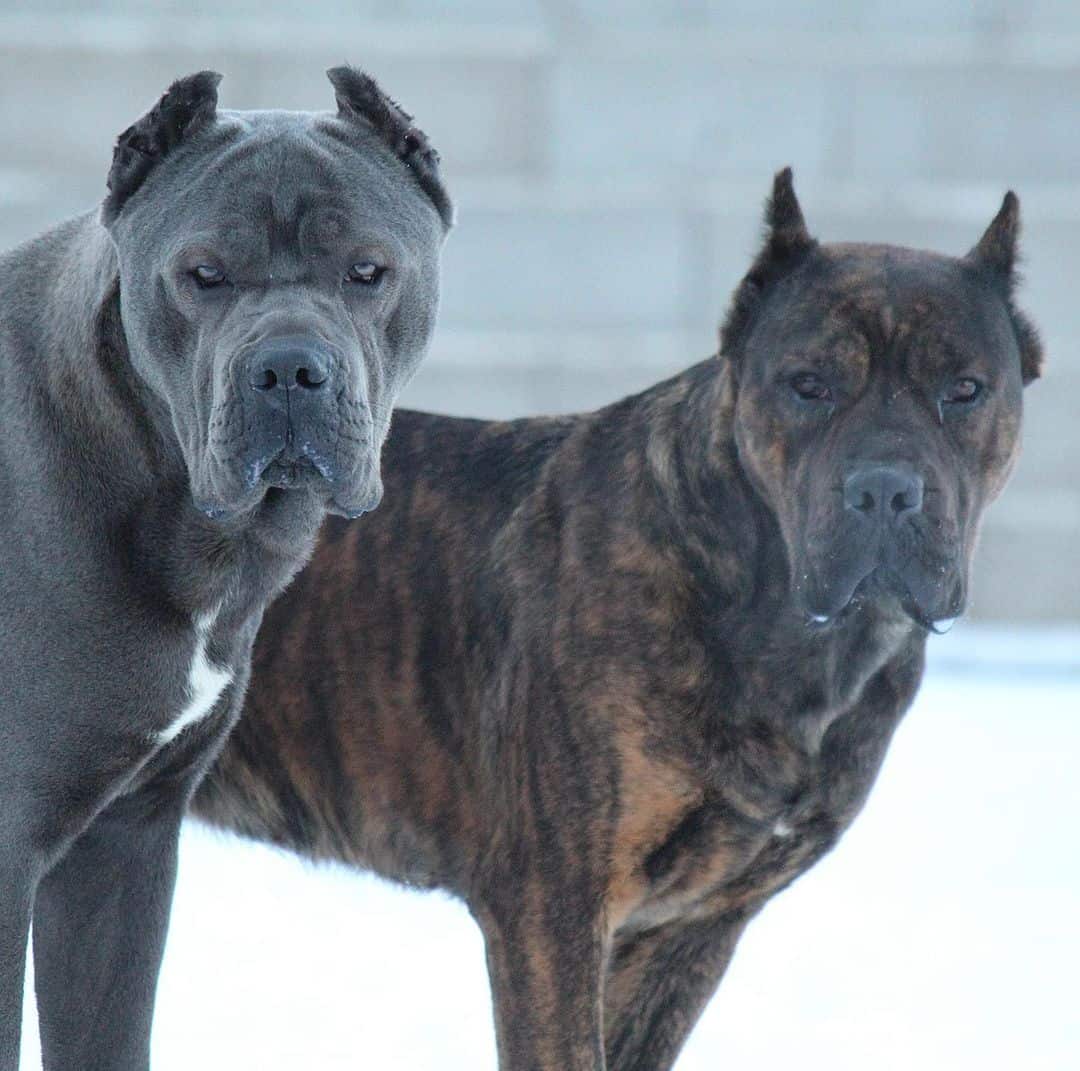
Photo from: @deminikovittoriacasa
Often, this breed is vulnerable to ear infections because a lot of Cane Corso owners decide to clip their dog’s ears. It usually happens in the dog’s young age. This makes it easier for this large breed to develop a middle or inner ear infection.
You should look for signs of inflammation in your dog’s ears.
Check for mucus, odor, and redness. Your dog might become restless, shake its head, or scratch or press its ears against the furniture. More severe cases may include loss of balance and trouble hearing, as well as eye twitching.
Ear infection is rarely life threatening. It tends to clear up after disinfection and a round of antibiotics.
Epilepsy: Recognize It Instantly In Your Cane Corso
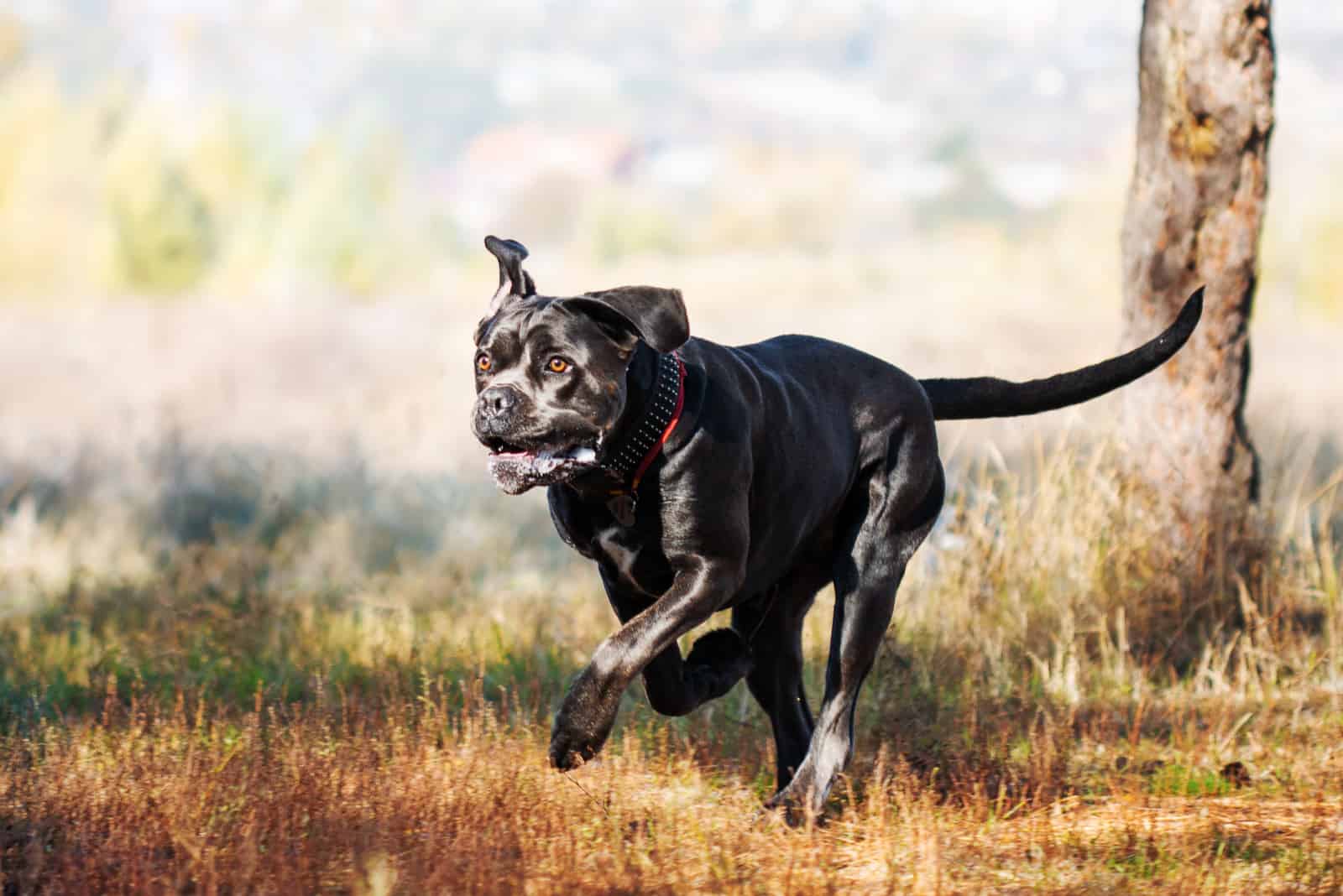
Canine epilepsy is one of the unfortunately common Cane Corso health issues.
An affected dog might exhibit strange behavior such as running in circles, dropping to the floor, staring into nothing, becoming unresponsive before going into convulsions, and twitching during which it may drool or even bite.
Instances can be brought about by a lot of things like brain trauma, toxic shock, etc. It is caused by an abnormality in the brain.
Idiopathic epilepsy is the inherited kind. Usually, in dogs, potential parents are screened for this and many other inherited diseases, and dogs with such health issues are not usually bred.
This is one of the reasons why it’s best to buy pups from certified, legitimate dog breeders.
In Case Of A Cane Corso Epilepsy Attack, What Should I Do?
As frightening and heart wrenching as it looks, the truth is that it will pass.
The best thing you can do is comfort your dog and calm it down by speaking to it in a soothing manner.
Your vet is probably going to prescribe a number of anti-epileptics or anticonvulsants, along with whatever else he may deem fit.
Do not give your dog any treatment for epilepsy on your own accord. They are very strong, and can harm your dog if not taken right.
If you suspect your dog’s convulsions to stem from eating something toxic, you should act quickly because it may be life threatening.
Epileptic seizures caused by primary epilepsy are disturbing to witness and horrible for the sufferer, but they tend to pass without damage and respond the best to treatment.
Answering Some Common Questions:
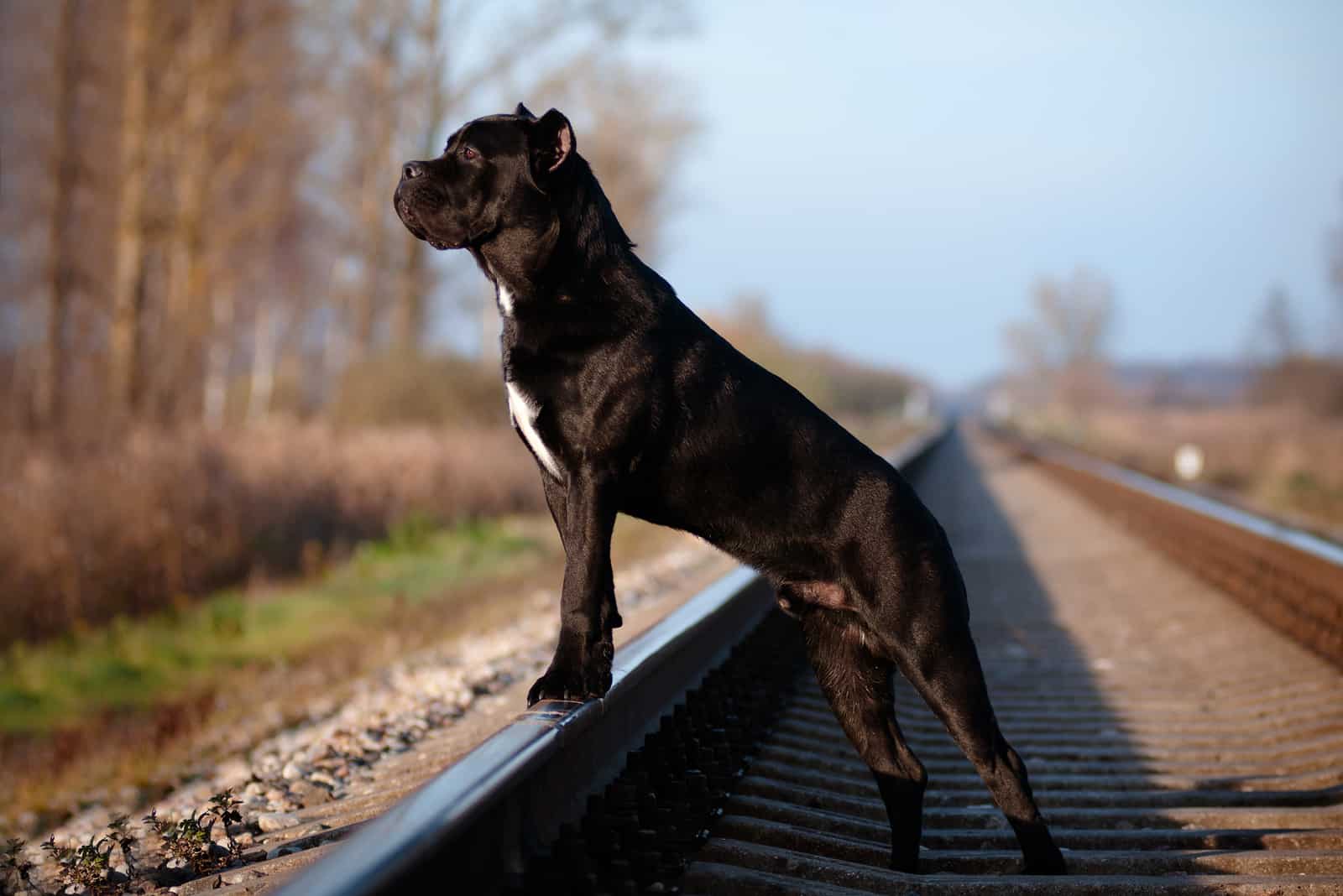
I am the type who always likes to ask a lot of questions, and I’m not ashamed to!
Most of the time, the answers come in useful at one point or another.
These are some of the facts we’re certain might interest you, the reader, concerning this wonderful Mastiff breed.
What’s The Average Cane Corso Lifespan?
The bigger the dog, the shorter the life.
It’s not fair, I know, but Cane Corsos typically live to around 12 years of age.
Too short, too short.
It’s so important to make every day count with your pup because time goes by so quickly.
It’s such a wonderful feeling to make another being happy. Times spent with your dog make for some of the most wonderful and cherished memories of all.
Why Is My Cane Corso So Skinny?
These Mastiffs tend to be naturally slender and well toned, with their rib cage protruding and their belly tight. It could all just be a figment of your worried mind.
If you do bear concern that your dog is unnaturally skinny, maybe you should take it to the vet just in case.
Has your dog been wormed regularly? Have you seen it eating, or is it uninterested in food? Some people like to feed their Cane Corso a raw diet in order to keep it fit and healthy.
Some parasites, such as the tapeworm, can leave your dog without proper nourishment.
What a waste of all that dog food!
An ulcer or an acid reflux outbreak could be responsible for it refusing food continuously.
It is irregular for this passionate eater to not want to chow down its food at any time of the day.
In Terms Of Disease, Are Cane Corsos Dangerous To Their Owners?
Zoonotic diseases are the ones that can spread from animals to humans via air, contact, saliva, etc. The Cane Corso is no exception, nor are any other dog breeds.
Your dog should be fully vaccinated against rabies and the lot, groomed for signs of lice, and looked after when playing in the dog park.
Whatever your dog brings home might come for you next!
That aside, in the modern day and age? Not particularly. You’ll probably be fine.
Should I Get A Cane Corso If I Don’t Have Pet Insurance?
I wouldn’t lose any sleep over it. The Cane Corso health issues are pretty run-of-the-mill for any kind of dog. I would dare say that they are quite fortunate in terms of genetic diseases.
They are also a hardy and resilient bunch, and will probably keep playing and being active through every issue they might face, never taking any sick leave or days off.
If you feel it in your heart, then it’s right that you shouldn’t let a thing like pet insurance be a detriment.
It is very useful to have. You never know when it might come in handy, especially if you’re dealing with a mischievous and restless pup.
In Conclusion:
This ancient working dog from Italy is no snowflake.
A few of the Cane Corso health issues are typical for the breed.
They amount to some inborn eye problems and its Achilles heel, the hip joint, which can deteriorate and cause lameness and pain. Its big appetite and slender stomach leave it prone to bloating.
Nobody knows what tomorrow will bring or what might happen. You are your dog’s protector in a way as it is yours. The best way to deal with these problems is to prevent them and manage them early on.
If anything does happen to your beloved pet, remember to:
1. Stay calm,
2. Be strong,
3. Let the vet handle it!
It’s the best thing you can do by far.
This lovable breed is not bred to be ailing and weak.
Maybe you will find that it tends to take care of you more often than the other way around?
References:
• Katharine L. Anderson, Helen Zulch, Dan G. O’Neill, Richard L. Meeson, and Lisa M. Collins (Apr 28, 2020), Risk Factors for Canine Osteoarthritis and Its Predisposing Arthropathies: A Systematic Review, taken from the ncbi.nlm.nih.gov website
Read Next: Cane Corso Eye Colors 101
